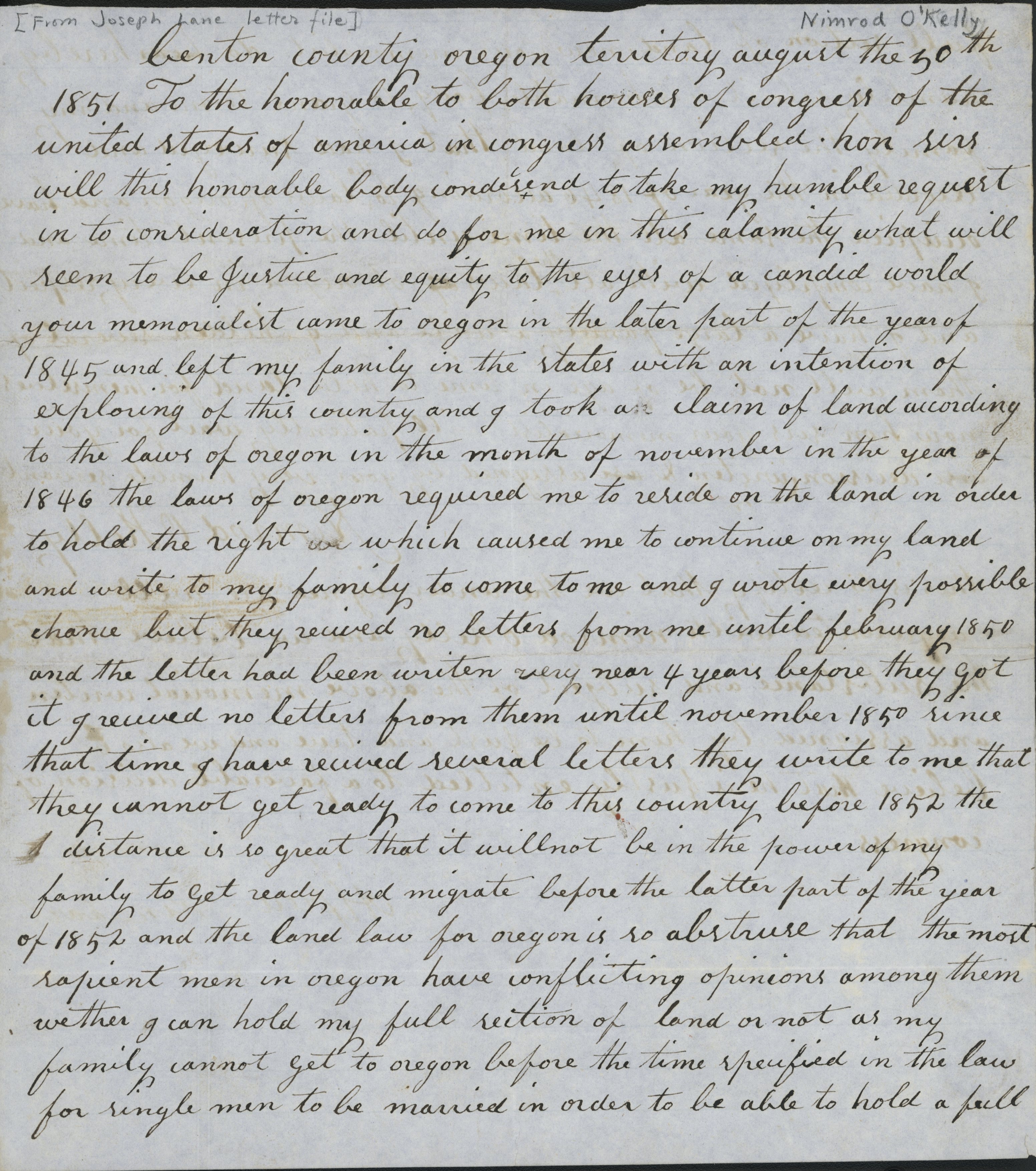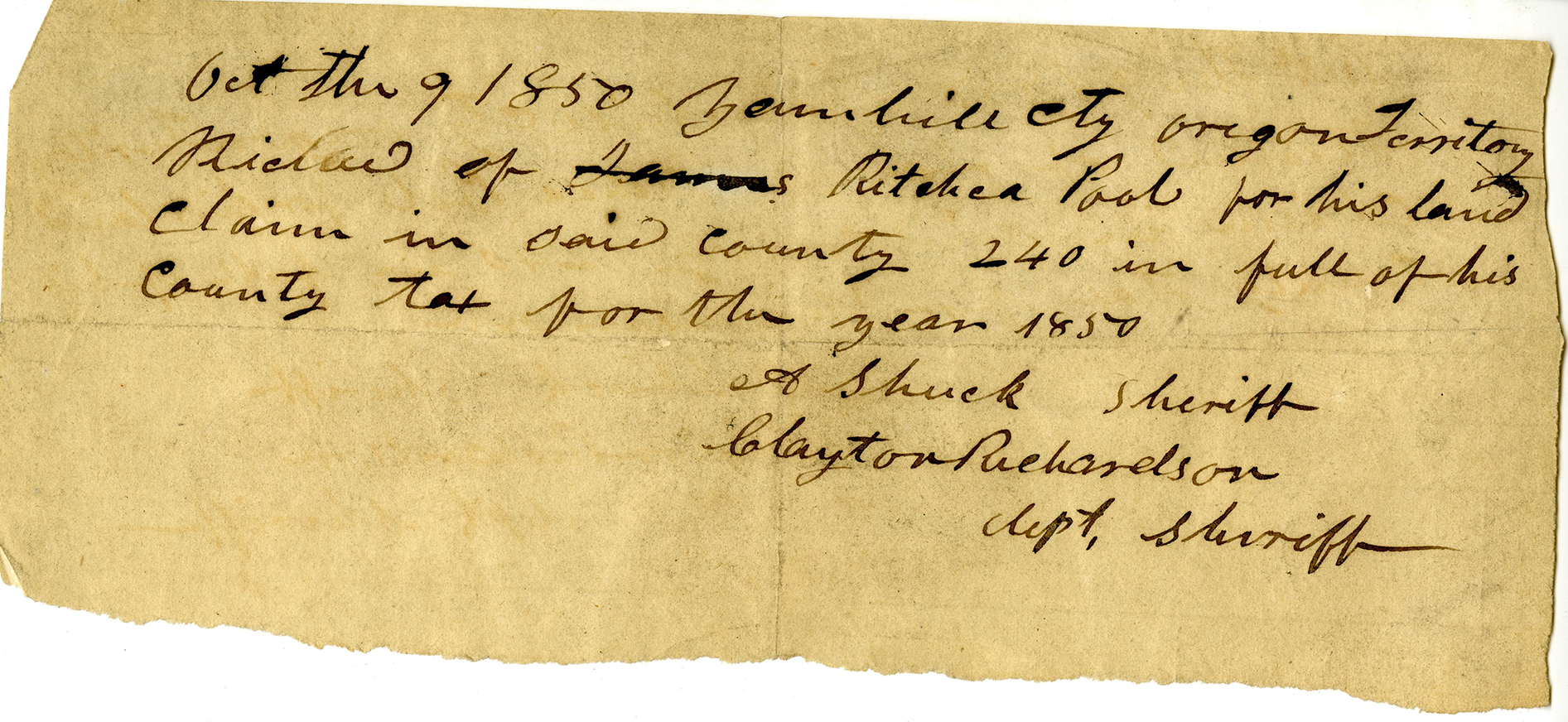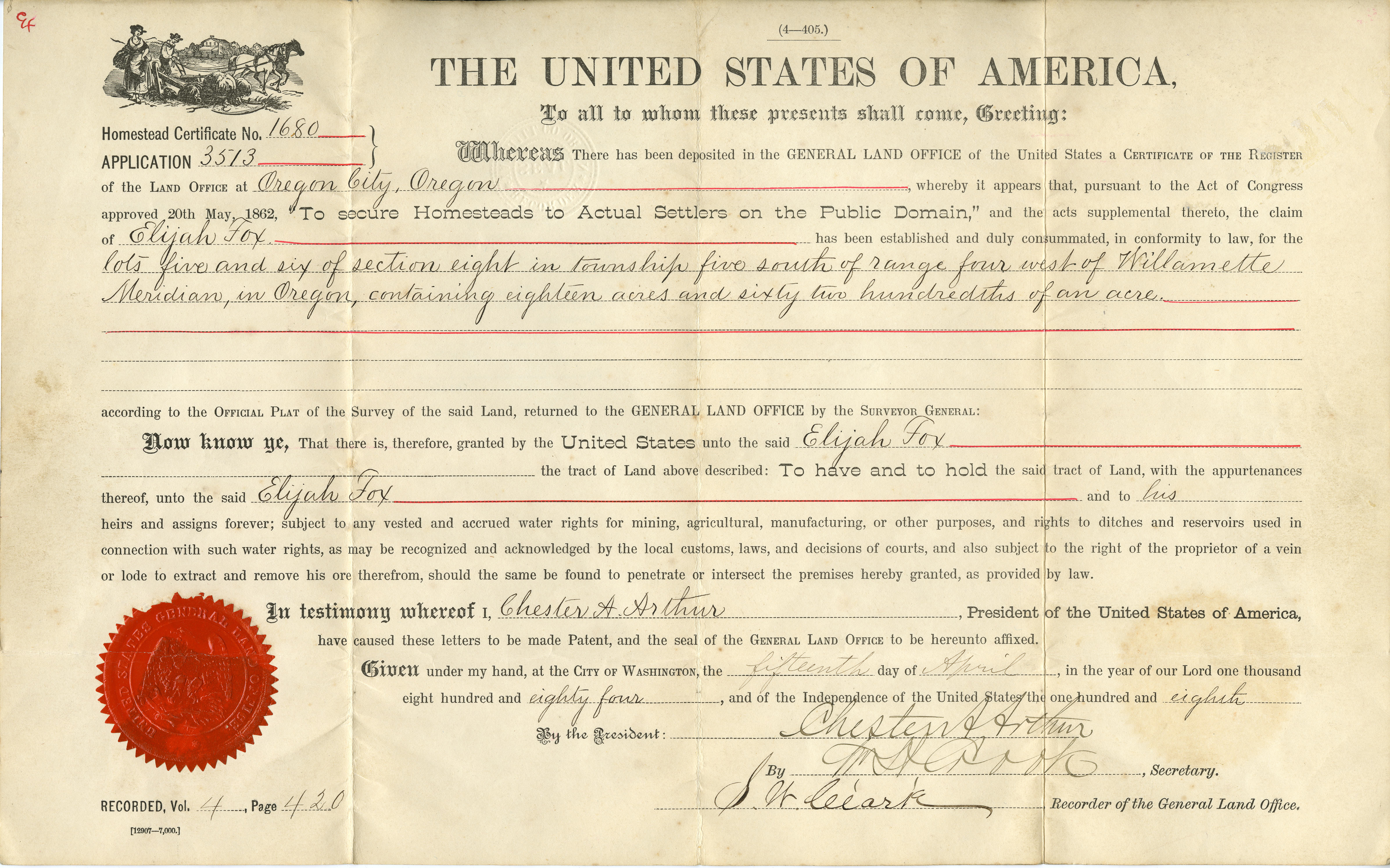In 1852, Nimrod O'Kelly was convicted of murder in Oregon in the first officially recorded homicide case before the Oregon Supreme Court.
At the age of sixty-five, O'Kelly came to Oregon on the Overland Trail in 1845 and staked a one-square-mile land claim in the heart of the Willamette Valley, as allowed by Oregon’s Provisional Government. In 1848, the U.S. government took possession of Oregon Country and subsequently reduced the size of existing land claims to a half-square mile for unmarried citizens. O'Kelly contended that he was married and thus entitled to a full square mile. He said his family was in Missouri and would arrive in future migrations. By 1852, however, no family had appeared.
Settlers began to encroach on O'Kelly’s claim. On May 13, 1852, he shot and killed Jeremiah Mahoney in a quarrel over boundaries. He was tried in June and found guilty of first-degree homicide despite his pleas of self-defense and defense of property. He was sentenced to be hanged in August. Citizens of several communities signed petitions protesting the sentence; but after two years of legal maneuvering and delays, the Oregon Supreme Court upheld the original sentence. During much of this time, O'Kelly was allowed to live with his family, who had arrived in October 1852.
O'Kelly went to the gallows three times: the first execution was postponed by Governor John Pollard Gaines; the second was stayed by the Oregon Territory Supreme Court; and the third was canceled by Governor John Wesley Davis, who commuted the sentence to two years imprisonment. The seventy-four-year-old O'Kelly, without guard, voluntarily reported to the Oregon territorial penitentiary in Portland.
Governor George Law Curry pardoned O'Kelly in March 1856. Finding his land claim still unsettled, O'Kelly traveled on foot and horseback along the Oregon Trail and then by train to the U.S. General Land Office in Washington, D.C. Finding no success there, he returned to Oregon in 1859.
He was 65 when he first staked his land claim, 72 when he killed, 74 when imprisoned, 76 when he went back across the continent, and 79 when he made his third trek on the Oregon Trail.
O’Kelly died in 1864, his claim still unsettled. Not until 1881 did the federal government transfer posthumously the full square mile of public land to the private ownership of O'Kelly and his wife Sarah.
-
![Full letter available under documents tab.]()
Letter from O'Kelly to Congress regarding his Oregon land claim, 1851.
Full letter available under documents tab. Courtesy Oregon Hist. Soc. Research Lib., Mss 624
Related Entries
-
![Oregon Donation Land Law]()
Oregon Donation Land Law
When Congress passed the Oregon Donation Land Law in 1850, the legislat…
-
![Oregon Trail]()
Oregon Trail
Introduction In popular culture, the Oregon Trail is perhaps the most …
-
![U.S. General Land Office in Oregon, ca. 1850-1946]()
U.S. General Land Office in Oregon, ca. 1850-1946
With the acquisition of the Oregon Country in 1846, the United States w…
Map This on the Oregon History WayFinder
The Oregon History Wayfinder is an interactive map that identifies significant places, people, and events in Oregon history.
Further Reading
Haskins, Devon. "How a former town called Jennyopolis became the site of Oregon's first reported murder." What's In A Name? KGW8, Portland. August 16, 2023.
Lansing, Ronald. Courts, Claims, and Killing on the Oregon Frontier. Pullman: Washington State University Press, 2005.




